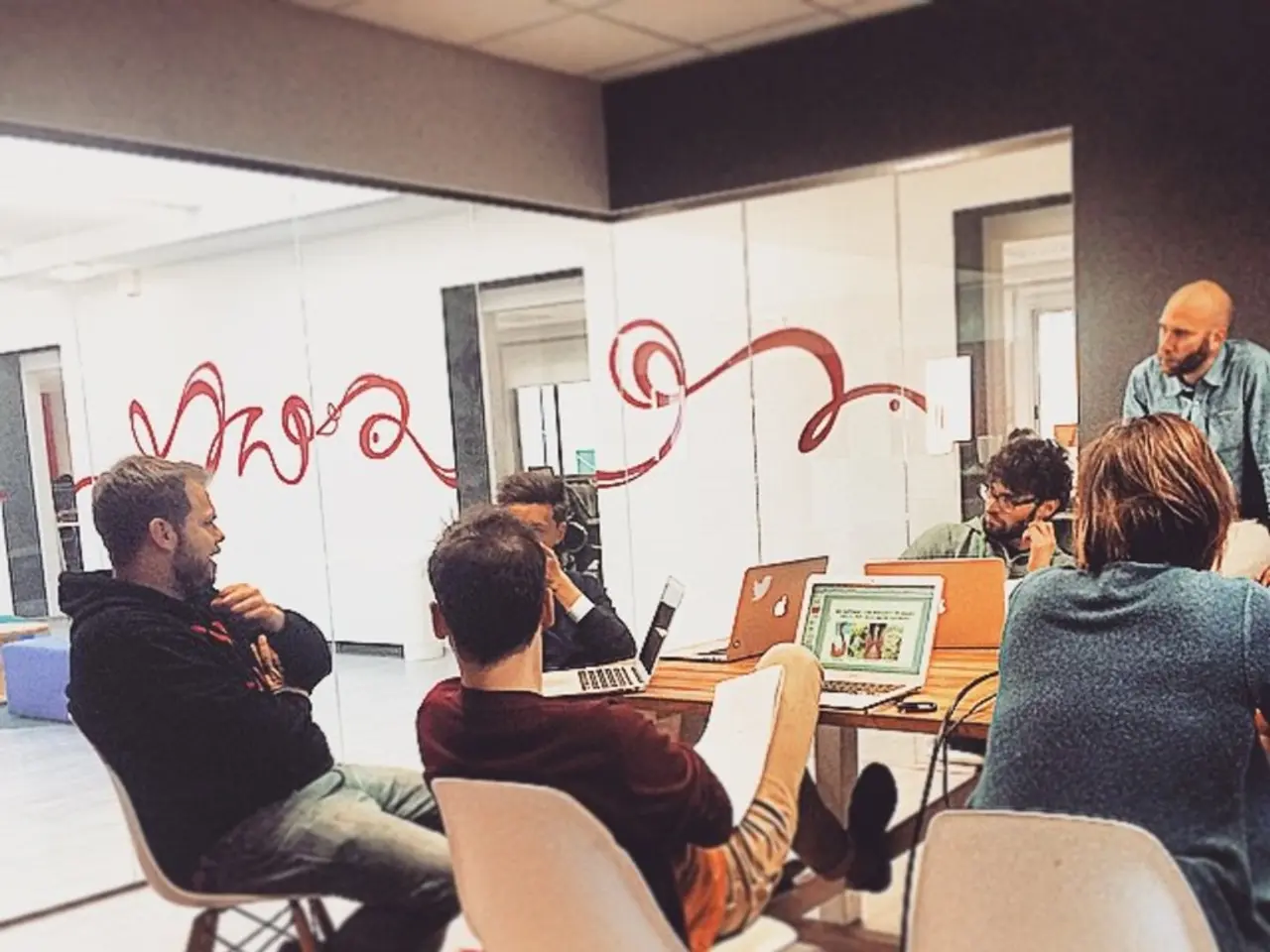The Job Market Edge Slipping Away From Young Workers
In the ever-evolving world of technology, Artificial Intelligence (AI) is making waves, transforming industries and reshaping the job market. However, the impact of AI on the US labor force, particularly for white-collar workers, is a complex and contentious issue.
AI-driven Layoffs and Automation
There are signs of increased job market competition for young college graduates in the US, particularly at the entry-level white-collar jobs. AI is automating routine tasks, leading to a drop in entry-level job postings by about 15–35% since 2023. This shift is causing concern among many young job seekers, with almost half of Gen Z believing AI has devalued their degrees [1][2].
The Bifurcated Labor Market
The labor market for white-collar workers is described as bifurcated, with both winners and losers. While AI is reducing some entry-level opportunities, particularly in routine white-collar roles, broader labor market trends and structural changes are also critical drivers.
For instance, the growth rate of jobs in the professional and business services category has shrunk slightly over the past year, but wage growth has accelerated to more than 5% last month [5]. This suggests a shift in the job market, with employers seeking more skilled and experienced workers, willing to offer higher compensation.
The Next Generation of AI
The implication for white-collar workers, especially new graduates, is increasing selectivity by employers, fewer easy entry points, and a need for skills that complement rather than compete with AI. This suggests a shift in what kinds of skills and experience are most valuable in the labor market.
The AI Boom and the Economy
The AI boom may lead to more losers than winners, either from workforce disruption or a malinvestment-induced bust. The US economy's health is being questioned due to recent labor market softness as indicated by the jobs report.
However, not all is doom and gloom. Nvidia Corp CEO Jensen Huang predicts that workers who use AI will be fine during the transition. The growth rate of jobs in the professional and business services category, although shrinking, is still present, and wages are rising.
Conclusion
The impact of AI on the US job market is a complex issue, with both positive and negative effects. While AI is reducing some entry-level opportunities, particularly in routine white-collar roles, it is also driving wage growth and a shift towards more skilled and experienced workers. Employers are increasingly seeking workers who can complement AI rather than compete with it. As the AI boom continues, it will be interesting to see how the job market evolves and how workers adapt to these changes.
[1] McKinsey & Company. (2023). The Future of Work: Artificial Intelligence, Automation, and the Economy.
[2] Sen, C. (2023). The AI Boom: Opportunities and Challenges. Bloomberg Opinion.
[3] Bureau of Labor Statistics. (2023). Employment Projections.
[4] Federal Reserve Bank of San Francisco. (2023). The Impact of AI on the Labor Market.
[5] U.S. Bureau of Labor Statistics. (2023). Employment, Hours, and Earnings from the Current Employment Statistics survey (National) [Data set]. Retrieved from https://www.bls.gov/ces/
- As the AI boom continues, young graduates entering the white-collar job market may find themselves competing against AI for routine tasks, potentially leading to a shrinking number of entry-level job opportunities.
- Despite the threats of AI-driven automation in the white-collar sector, there is a growing demand for workers who can complement AI with their skills, as non-routine tasks and high-level problem-solving abilities become more valuable in the labor market.




